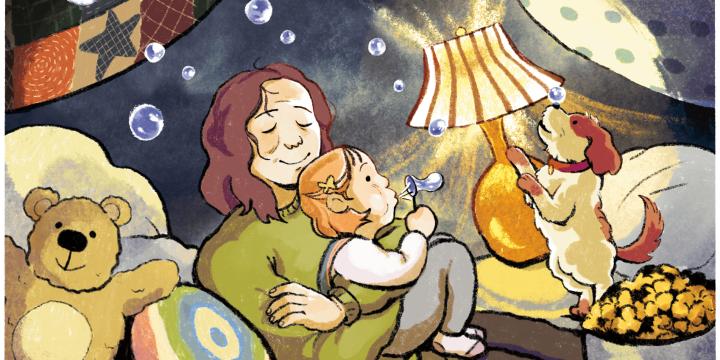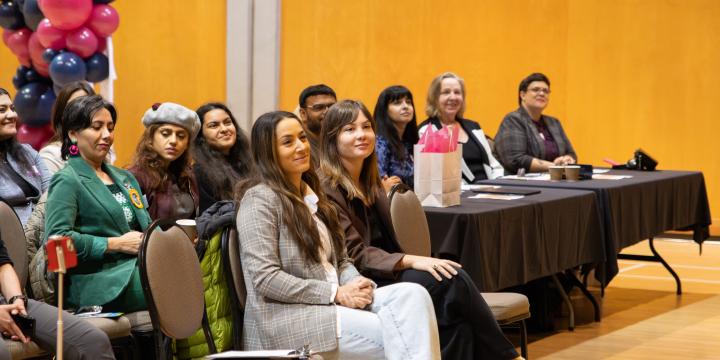
Girls around the world continue to face disproportionate challenges regarding access to education, physical safety, mental health and barriers to a life without violence. In an effort to combat these issues and advocate for a higher quality of life for girls worldwide, the United Nations General Assembly adopted Resolution 66/170 to declare October 11 as the International Day of the Girl Child on December 19, 2011.
Although great strides have been made in the last decade in this area, issues such as climate change, COVID-19 and humanitarian conflicts have increased burdens on young girls and worn away many important gains made over the last ten years. A report by UNICEF shows that the risk of gender-based violence and harmful practices have risen during the pandemic, with an increased number of girls kept from schools, and being forced into child marriages or pregnancy. Over the next decade, up to 10 million more girls will be at risk of becoming child brides as a result of the pandemic.
According to UN Environment, an estimated 80% of people displaced by climate change are female. Millions of people are forced to become climate refugees per year, due to climate-related conflicts and loss of land. As a result, women and girls are often placed in vulnerable situations in temporary camps, putting them at risk of sexual violence. Women and girls make up more than 40% of the agriculture labour force, responsible for 60-80% of food production. For young girls, this detracts from their ability to go to school, jeopardizing their ability to gain an education and eventual financial independence, making them reliant on their male guardians. It also exposes them to threats of violence and abduction when participating in labour away from the safety of their homes and communities.
In the face of current issues facing their generation, the increase in mental health issues amongst girls is on the rise and continues to be shrouded in stigma. Girls also face particular challenges surrounding menstruation, with studies showing that up to 70% of women say they have missed school or work because of their period. Furthermore, menstruation is still a taboo subject in some cultures, and a lack of education about proper menstrual hygiene can lead to risks of toxic shock syndrome, a potentially fatal condition. It isn’t just a problem for developing countries. In B.C., more than a quarter of people who menstruate have experienced period poverty or a period without essential hygiene products, according to a report from United Way British Columbia.
Making an Impact
It is important to recognize how issues such as climate change, COVID-19 and humanitarian conflicts disproportionality affect girls, but to also recognize the barriers they face simply for being a girl. But the outlook is not all bleak, with many organizations advocating for the right of the girl, such as UNICEF’s Calls to Action and the UN’s efforts to advocate and educate on these issues.
As well as organizations prioritizing advocacy for equity, there are many girls making tremendous impacts in their own right, such as Greta Thunberg, Malala Yousafzai, and girls around the world speaking up for inequality on every level. These young women show that change happens from the ground up and that we cannot remain silent in the face of injustice. Let’s get inspired by these strong girls around the world, advocating for themselves and each other.
Here are some inspiring stories and ways that you can advocate for the right of the girl child:
Coping with COVID19 | Season 2 I Episode 3: Girls stand up to inequality
Roa’a Al-Fased, 14, works to empower adolescent girls in her community in Jordan through promoting access to sexual and reproductive health services and raising awareness on gender-based violence: https://www.unwomen.org/en/news/stories/2021/10/from-where-i-stand-roaa-al-fased
UNICEF’s Calls to Action:
From October 2022 — October 2023, we will collectively call for greater attention, investment and action on:
-
Supporting the leadership of adolescent girls at the forefront of change efforts, including by hearing their voices, responding to their asks, and nurturing spaces for their inclusion in decision-making.
-
Increasing resources for and investments in adolescent girls, including for the networks and organizations that support quality and inclusive education and prioritize their well-being.
-
Improving access to and uptake of inclusive adolescent girl-centered services at all times but especially in crisis response and recovery
Ways to get involved
#IDG2022 #DayoftheGirl
-
Join the IDG 24-hour Virtual Forum, convened by Plan International. There are over 20 events to inspire you, expand your perspective, and help you celebrate 10 years of #IDG.
-
Share human interest stories, blogs and videos of girl changemakers, and the inspiring networks and organizations that are resourcing girls, letting girls lead, and strengthening services for girls. Let’s collectively amplify their leadership, actions, and impact to inspire others.
-
Engage government officials, policymakers and stakeholders to make more targeted investments that tackle inequalities experienced by girls, especially while accessing mental health and psychosocial support services in the face of conflict, forced migration, natural disasters, and the effects of climate change.
-
Engage key female influencers across industries to be the face of change we want girls to see as possible. Role models speak a thousand words. Let’s change the global conversation and public perception of girl leaders.
-
Amplify your commitment to raising awareness about and addressing factors that hold girls in your country and region back.

